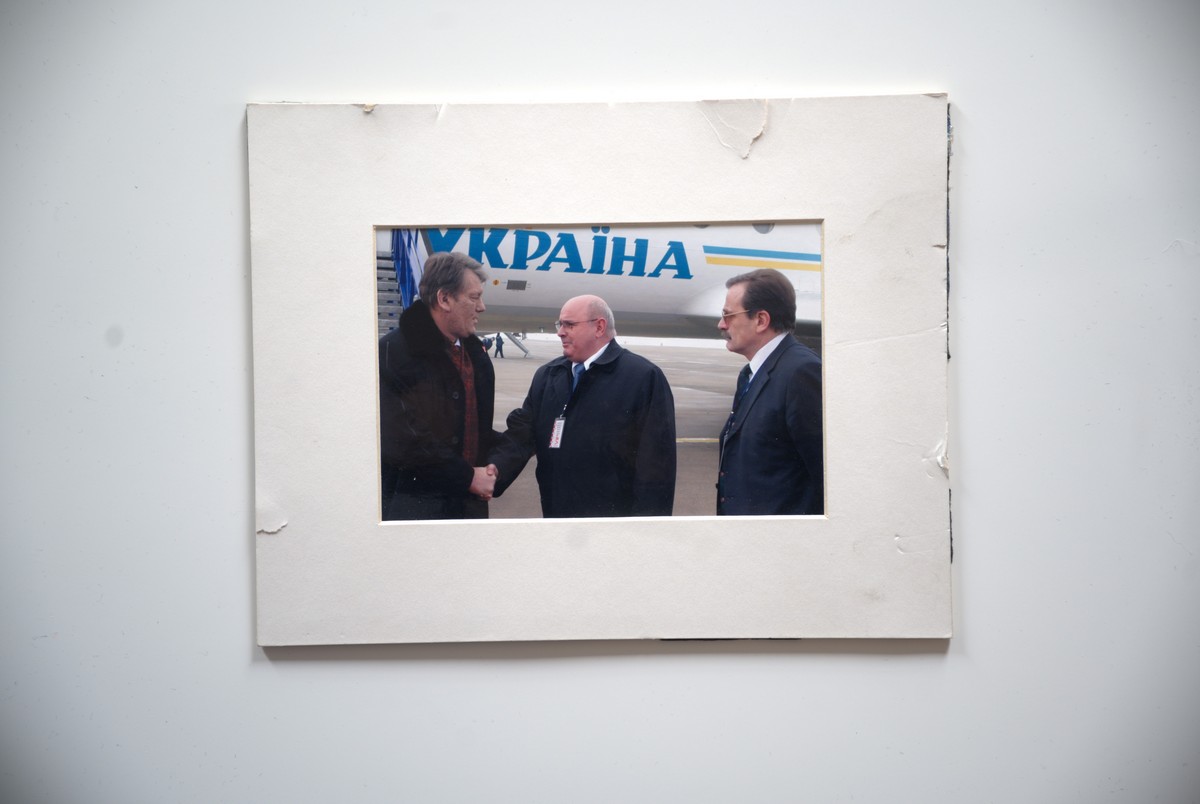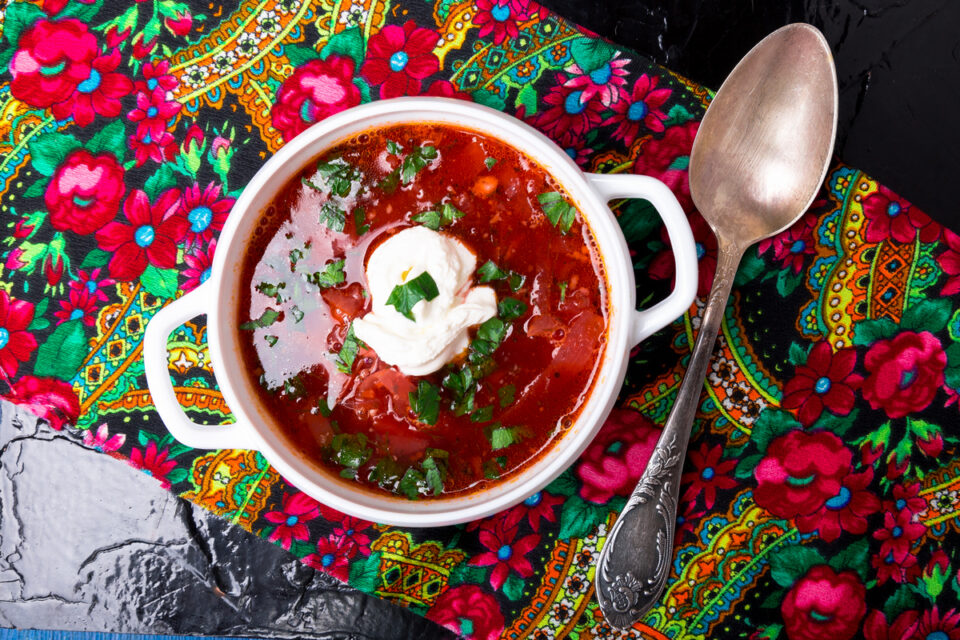When you need to negotiate with someone, feed them well. A good old rule of diplomacy!

Allegedly, the famous Talleyrand was the first top-class diplomat who noted that “if you want to draw something out of your counterpart, get something from him, first you need to put something in – to fill his belly.”
Regardless of Talleyrand said, this could have been the French response to the custom of the concurrent English court, at the time of Queen Anne, when the respect of the crown was secured by magnificent banquets for foreign guests, so legends about these feasts were carried by diplomatic carriages on the dusty roads between the European courts. Allegedly, even that impostor Henry the Eighth and François the First, that fine Renaissance restorer, also used to try to resolve their personal and political differences and discordant English-French duels with the enormous feasts at huge, massive court tables. Of course, if the negotiations failed, the feasts would turn into wars, the harps would be replaced by war trumpets and coffins would be made from the boards of those fabulous court tables, coffins for the poor conscripted commoners, hungry, anyway, on both sides.
I didn’t know why, at the time I wrote these notes in 1996, why these reminiscences and metaphors came to my mind at all, and why in Ukraine, why in Kyiv, why in the ceremonial hall of the Ministry of Foreign Affairs, at the top of that huge curved yellow-brown building on the main square. And who knows why they popped up over the traditional, ordinary, regular Ukrainian – borsch. Even more unusual was that there were no Henry-the-Eight-like impostors around, horizons were calm, we came for the usual, regular consultations, and no side wanted to extract anything by filling up our bellies.
I would realize that subconscious reminiscences only 26 years later, when the Russian invasion of Ukraine started, in early spring 2022.
We were received by the Minister, Hennadiy Yusupovich Udovenko who was, at the time, still Gennadiy, the version of his name in Russian. The “Ukrainization” will come 26 years later. Hennadiy was a large, broad man, looking as if he had no time to adapt his body to the historical changes of the scenery. In a sense, his overall appearance was of the old “apparatchik” with a new Boss tie.
But, he was a well-intended man, smiling, good-natured. Anyway, he later made an international carrier, elevating himself to post the President of the General Assembly of the United Nations. Inevitably, one compares…Ukraine, at the top of the UN, 1996…and, rolling the years, coming to Ukraine 2022. Nothing more unfortunate has been seen in Europe for almost one century! This was nothing but the violent attempt to pull the country into the unwanted direction, to the East, or to divide it – repetition of the post-WW2 fate of Central Europe. Shocking!
Well, back to the past. After the benevolent talks, Hennadiy escorted us to the top of that building for a usual lunch in the restaurant or the Ministry’s canteen. The oak-clad walls and the smell reminiscent of the Soviet era, that unforgettable odour of communism, still in the air even years after the Fall. The table is huge and rectangular, they must have been like that in the courts during the time of Kievan Rus, they must have entertained Polish, Swedish and Ottoman nobles and viziers in the times when the big geopolitics of that time flowed through these steppes and when this country was at its peak…as I, soaked in the fogs of Ukrainian history and relations with big powers of different epochs, lightly knocked on the door of the question that was in the air even back then: what the future might bring? OK, I thought, they have some heavy tools, like gas transportation routes, they have some cards in the sleeve, but there was that feeling that the country is exposed, floating on the great unknown sea of broader geopolitical games, even at that time, plus greatly divided inside.
And, whilst images of feasts and geopolitics were swirling in my head, they brought Ukrainian soup, borsch – a simple and ordinary dish and yet also a complex one. Like the country? Well, perhaps a possible sign, I thought, looking at the clay pot that was too hot to touch and tall enough to retain heat for a long time – there it was, a dark, red borsch, made of beet, with bloody colour prevailing. I don’t think I could ever forget the bloody colour of that borsch. The year was 1996.
But the cook must have been too zealous or afraid that the borsch might be too weak, thin, without “strength”, so he must have put too much fat on the pan in which he fried the onions and later added those dozens of sorts of meat and vegetables. So, laid in front of us, there was a clay bowl of bloody red soup with small white islands of cooled, thickened fat on the surface. The year was 1996. It was not at all clear to me why I was so upset, what I could make of that borsch, what metaphor, why I was nervous? But it stayed with me for decades – the bloody surface, white islands. Twenty-six years later, it reappeared as a sorrowful cartography of the war.
Hennadiy sensed that something was in the air, that we might start with polite, but somewhat intrusive questions…you know, we noticed your undefined position between the Union and Russia, we noticed internal divisions, we noted the lack of national dialogue.
So, as to avoid possible uncomfortable questions, he resorted to the borsch stories. At the time, he didn’t and couldn’t know that this was exactly what his own country was doing, avoiding questions, whilst Henry the Eight was probably already considering future acts.
Hennadiy knew, better than us, that these islands of white fat have no place floating on top of the borsch….discomfort was visible on his face, he was looking at his assistants as if wanting to say bring me that cook, he embarrassed me, he embarrassed all of us…bring him here…or, no, I will wait for him to come at the end to get the appraisals…then I will strangle him with this Boss tie.
Of course, it wasn’t that tight, but we came to the rescue from our side. “Very interesting dish, I admit, I’m eating borsch for the first time,” said the Minister from our side. “It should probably be so greasy on top, right… tradition?” Dear God, he wanted to save the poor guy in the kitchen, but he ruined everything! But luckily, Hennadiy must have been so nervous and furious that the arrow flew past him, and he wretchedly grasped at the straw and began to explain the Great Secret of Borsch as if he had just been appointed the Head Curator of Borsch Museum in Kyiv.
Well, for a start, you need to prepare everything – cut the beef into cubes, carrots into slices, chop the parsley, celery, onions, cabbage, cucumbers, beets… The inevitable and most important beets followed by potatoes, tomatoes and dill. Dried, you know, to relax in the hot stock, then salt, pepper… He sounded like a master of that poor cook in the basement! He was listing it all with the precision of a watchmaker as if the absence of just one ingredient would stop all the clocks of the world. Then he mentions how his mother and great-grandmother and her great-grandmother used lard while the meat was cooking, prepared onions and then slowly added finely chopped cabbage, carrots and other vegetables of eternal poverty. Because, this dish, ordinary and yet unusual, is actually a collection of everything that poor homesteads could provide in cold wastelands and meagre yards.
Nothing could stop Hennadiy, he knew the future might be disturbing, he wanted to avoid talking about it, the borsch story was like whistling in the dark, a substitute for the perhaps terrible unknown.
Surely, he was trying to avoid talking about the future. And he knew we understood that. If anyone, we knew what it is to be faced with the unknown, with a possibly terrible future. So, we understood why he wouldn’t give up. Buy time, and avoid questions. An old diplomatic trick… He continued to pull recipes from his sleeve. Have you heard about horokvika, a stew-soup in which peas are the main ingredient? Have you heard of cabbage borsch? What about borsch with finely chopped pieces of kidney stewed on onion? No end in sight!

But, at the moment, he got our attention. This is pure art – OK, not really borsch, but one of our true delicacies. I still remember how my mother was preparing it, he was eager to explain it to us. In the morning, she would cook the whole, big head of cabbage in salted water. In the meantime, she would prepare minced meat – you know, onion, meat, salt and pepper, waiting until the meat releases its juice. Oh, that’s where the true art begins. Mother starts to separate the leaves of the boiled cabbage head, one by one, putting them aside, until she would come to the very core. Then the process would go back – yes, meat over the core, the leaf over the meat, the meat over the leaf, all the way, until we kids would be fascinated with a huge cabbage head hiding meat between the leaves. Was it indirectly trying to send us a message?
Avoiding talking about the unknown future that he might have been afraid of, but describing his country by talking so much about the borsch and that huge cabbage filled with layers of meat?
We went back home…in my mind, staring at the dark sky from the small window of the plane, it really was a story of the country, which, in a sense, at that time, resembled the borsch: seemingly clear, but actually very complicated. The combination of opposites, strange accumulation of ingredients, and a mixture of differences, even at that time resembled a plate of borsch at the geopolitical table of Europe.
Hinnadiy left to take the UN post, not much later on. As much as I could, I followed the kitchen of politics in the country – changes of governments, revolutions of changing colours, the country torn between extended periods of negligence from the West and ravenousness from the East. Even when I worked in Kyiv for some time, during the post-Maydan days, when walking down the Hreschatuk street to the square, between the lines of already demolished tents, I thought how the whole scenery was some unrealistic mixture of Woodstock and Hell’s Angels party, with what remained of sincere pro-democratic groups and the blacked dressed members of Banderists whom I would try to avoid in their nights patrolling, and who were given the task to try to revive inner national dialogue in the divided country. Too late, I thought at the time. I witnessed the disintegration, I witnessed the first incursions of the “green man” across the border, then Crimea and…
Almost ten years have passed since I was there. And, incredibly, twenty-six years have passed since that lunch. I can still see that hot clay of bloody-coloured borsch with white lard islands floating around.
What a terrible cartography of the war!
ABOUT THE SERIAL
This serial is based on the intriguing book “Diplomacy at the Table”, written by the Croatian diplomat Hidajet Biščević, who reviewed and edited the original manuscript and selected the most interesting records, especially for our magazine.
As of this issue, you will read many interesting stories from real diplomacy that were told at the tables brimming with interesting food and surrounded by even more interesting politicians and diplomats from around the world.
His Excellency, Mr Biščević, is the ambassador of the Republic of Croatia to Serbia. He lives with his family in Belgrade.